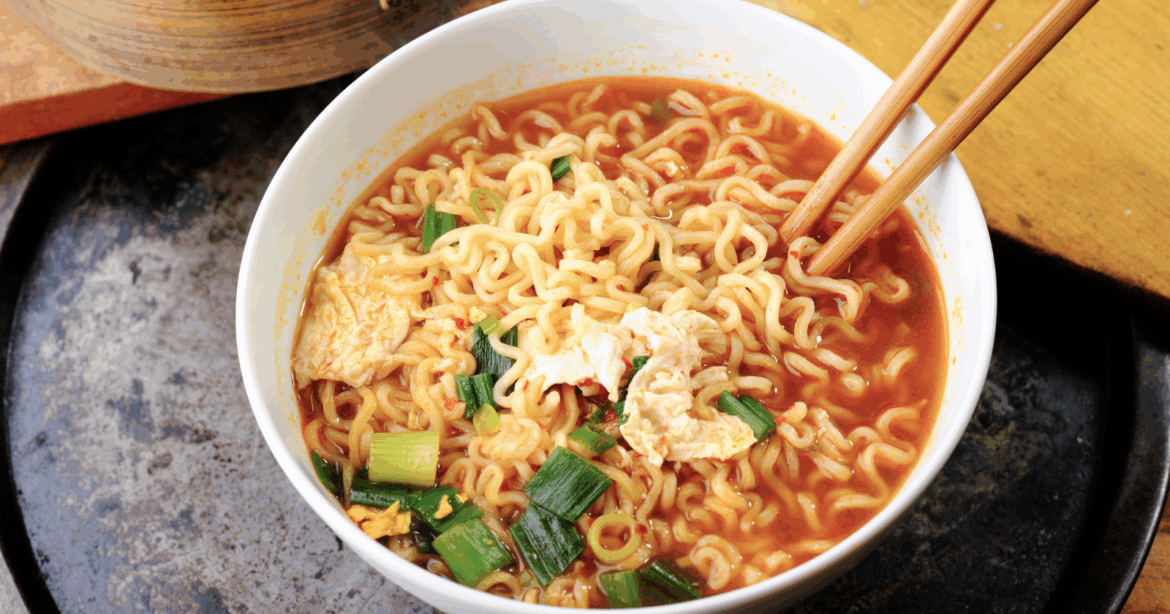It hit me in a tucked-away ramen bar off Melrose. Steam rose like stage fog from a bowl of miso mushroom ramen, carrying that unmistakable savory aroma. The kind that makes your whole brain light up.
That’s when it clicked: umami isn’t owned by meat. It’s chemistry, not culture, and plants can play the same notes, sometimes even better.
Since that night, I’ve been experimenting at home, building a vegan ramen that doesn’t just replace pork broth. It reinvents comfort in a cleaner, more sustainable key.
The science behind plant-based umami
We throw the word “umami” around a lot, but few people realize it’s literally the taste of glutamates, naturally occurring compounds that make your taste buds hum. They’re what give aged cheese, soy sauce, and mushrooms that deep, savory quality.
Here’s the kicker: plant foods like dried shiitake, miso, kombu, tomatoes, and fermented soy are loaded with natural glutamates. You don’t need meat bones or fish flakes to create depth; you just need to layer your flavors thoughtfully.
According to a 2024 review in Food Research International, natural umami-rich ingredients such as mushrooms, seaweed, tomatoes, and soybeans have been shown to enhance savory flavor while allowing for significant sodium reduction, often without
compromising taste or satisfaction.
Translation: your taste buds get what they want, and your health wins too.
Building the broth: where magic starts
The secret to great ramen isn’t fancy toppings; it’s a broth that sings. My first attempt years ago? A watery disappointment.
The fix came from layering techniques used in traditional ramen: sauté, deglaze, simmer, rest. But this time, I leaned on plant-based umami powerhouses.
Recipe: Jordan’s ultimate vegan umami ramen
Serves: 3–4
Time: About 45 minutes
Ingredients
Broth base:
1 Tbsp sesame oil
1 Tbsp neutral oil (avocado or grapeseed)
1 medium yellow onion, roughly chopped
4 cloves garlic, smashed
1-inch piece fresh ginger, sliced
5 dried shiitake mushrooms
2 Tbsp soy sauce or tamari
1 Tbsp mirin (or rice vinegar + pinch of sugar)
4 cups vegetable broth
1 small sheet kombu (dried kelp)
1 Tbsp white or red miso paste
1 tsp toasted sesame seeds (optional, for depth)
Noodles and toppings:
8 oz ramen noodles (fresh or dried, vegan-friendly)
½ block firm tofu, cubed and pan-seared
1 cup baby spinach or bok choy
½ cup corn kernels (fresh or frozen)
2 green onions, thinly sliced
1 sheet nori, torn into strips
Chili oil, sesame oil, or crispy shallots for garnish
Directions
Sauté the aromatics.
Heat sesame and neutral oil in a large pot over medium heat. Add onion, garlic, and ginger. Cook for 5–7 minutes until fragrant and lightly browned.
Layer the umami.
Toss in dried shiitake mushrooms and stir for another minute. Deglaze the pot with soy sauce and mirin, scraping up any flavorful bits from the bottom.
Build the broth.
Pour in vegetable broth, add kombu, and bring to a simmer. Cover and let it gently bubble for 20 minutes.
Finish the flavor.
Remove kombu and mushrooms (you can slice the mushrooms and add them back later). Stir in miso paste until dissolved. Taste and adjust with a splash of more soy sauce if needed.
Cook the noodles.
In a separate pot, cook ramen noodles according to package directions. Drain and divide among bowls.
Assemble the magic.
Ladle hot broth over noodles. Add tofu, greens, corn, and toppings. Finish with green onions, nori strips, and a drizzle of chili oil or sesame oil.
Why it works
Each layer has a role. The aromatics build foundation. The shiitake and kombu create a symphony of glutamates. Miso deepens the finish with salty-sweet complexity, while soy and sesame round out the body.
Together, they transform a handful of humble ingredients into something with emotional weight.
Comfort food with a conscience
Here’s the bigger picture: a typical pork-bone broth takes hours and a heavy carbon footprint.
This vegan version uses a fraction of the water, zero animal products, and relies on fermentation and fungi (nature’s recyclers) for flavor.
When we talk about sustainable eating, it’s easy to focus on restriction. But ramen reminds me that sustainability is also about creativity: taking what we already have and coaxing out its fullest potential.
Across California, vegan ramen pop-ups and small-batch makers are leading this shift, proving comfort food doesn’t have to cost the planet.
Final bite
Maybe sustainability begins in small, flavorful moments, like a bowl that asks for mindfulness instead of excess.
A broth that simmers with purpose. A meal that warms both the body and the conscience.
In every spoonful of umami, there’s a quiet reminder that joy deepens when it’s shared.
What’s Your Plant-Powered Archetype?
Ever wonder what your everyday habits say about your deeper purpose—and how they ripple out to impact the planet?
This 90-second quiz reveals the plant-powered role you’re here to play, and the tiny shift that makes it even more powerful.
12 fun questions. Instant results. Surprisingly accurate.


Dining and Cooking